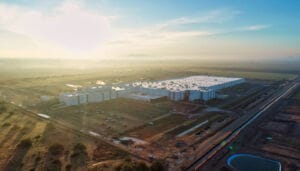Data from the CDC reports a concerning, yet unsurprising statistic: an average of 618 deaths occur annually due to heat exposure in workplace settings such as warehouses and construction sites. This startling data is just scratching the surface of a bigger economic and health crisis, with heat-related illnesses causing an estimated $100 billion in productivity losses across the U.S per year.
Although this affects all economic backgrounds, the damage is severe among lower-wage workers, who face a 20% increased risk of heat-related injuries, leading to lost income and overwhelming medical bills. On top of that, according to OSHA, somewhere between 50% and 70% of outdoor fatalities occur during an employee’s first few days in extreme temperature environments.
A report from the Center for American Progress projected even more troubling statistics in 2023: every summer, heat events triggered nearly 235,000 emergency department visits and over 56,000 hospital visits. Approximate healthcare cost? $1 billion.
Industries at Risk
The industries at risk include construction, agriculture, warehousing, fire services, and manufacturing. Indoor workers in bakeries, kitchens, and laundries face similar risks due to heat-generating equipment. Delivery drivers and boiler room workers are also highly vulnerable.
Innovation in Worker Protection
Recent technological advancements in safety equipment are revolutionizing how industries approach safety in non-temperate environments. Modern safety vests now incorporate advanced cooling, addressing multiple risk factors simultaneously. These innovative solutions integrate hydration systems and cooling directly into standard safety equipment, including specialized equipment for law enforcement, military, and industrial applications.
Some company industry leaders have developed protective equipment that maintains optimal body temperature while meeting safety standards from OSHA. This advanced equipment is particularly valuable for workers wearing required protective equipment, which traditionally exacerbates heat stress.
Comprehensive Heat Management
Effective body temperature management extends beyond equipment. Risk factors include:
- Environmental conditions like high temperature, humidity, and direct sun exposure.
- Physical factors like exertion levels, and protective equipment requirements.
- Personal health considerations like acclimatization, underlying conditions, and medications.
Modern protective equipment addresses these risk factors through:
- Integrated cooling systems in standard safety equipment
- Enhanced ventilation design
- Built-in hydration solutions
- Temperature monitoring capabilities
Economic Benefits
By preventing heat-related illnesses, companies can:
- Reduce productivity losses
- Decrease emergency medical costs
- Improve worker retention
- Maintain consistent operational efficiency
- Lower insurance premiums
- Avoid regulatory penalties
Looking Forward
Industries that have adopted advancements in cooling and hydration technology report improved retention and productivity, reduced heat-related incidents, and enhanced operational efficiency. The integration of cooling and hydration systems into standard safety equipment represents a significant advancement in workplace safety, providing a practical solution to a growing occupational hazard.




